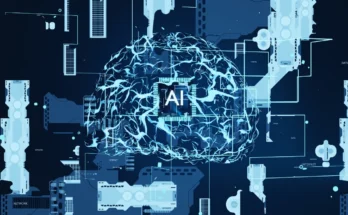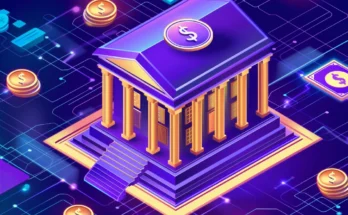The term “metaverse” has been buzzing around tech circles, social media, and even mainstream news, but what is the metaverse, exactly? At its core, the metaverse refers to a collective, virtual space that blurs the lines between digital and physical realities. Unlike the internet we know today, the metaverse offers an immersive, interconnected digital world where people can socialize, work, play, and even trade in virtual economies.
In this article, we’ll dive deep into the concept of the metaverse, breaking down how it works, its key components, and what it means for the future of digital interaction. By the end, you’ll not only understand what the metaverse is but also gain insight into the technology that powers it and how it may soon become a significant part of your daily life.
The Evolution of Digital Reality
Digital technology has rapidly evolved from simple computer systems to immersive experiences like virtual reality (VR) and augmented reality (AR). The metaverse is often described as the next phase in this evolution.
From Basic Internet to Immersive Worlds
The internet initially began as a text-based network that connected computers worldwide, but it has grown into an expansive multimedia experience. The metaverse builds on this, creating a more interactive and shared digital environment. Instead of simply browsing the web, users will step inside it.
The Role of VR and AR in the Metaverse
VR and AR technologies are key to metaverse technology. Through headsets and augmented glasses, users can interact with digital objects and spaces in more meaningful ways. Imagine walking through a virtual mall or attending a concert without leaving your living room. These are not just futuristic fantasies—they are the experiences that the metaverse promises to deliver.
Current Examples of the Metaverse
Although the full realization of the metaverse is still years away, we already see glimpses of it in platforms like Fortnite, Roblox, and Meta’s (formerly Facebook) Horizon Worlds. These platforms offer users the ability to create avatars, interact with others in virtual spaces, and engage in immersive digital activities.
What is Metaverse Technology?
Metaverse technology is a blend of several cutting-edge innovations, including VR, AR, blockchain, and artificial intelligence. These technologies converge to create an ecosystem where users can experience digital environments as if they were real.
Virtual Reality and Augmented Reality
As mentioned, VR and AR are fundamental to the metaverse experience. Virtual reality fully immerses users in a digital world, while augmented reality overlays digital elements onto the real world. For the metaverse to reach its full potential, improvements in hardware—such as lighter VR headsets and more efficient AR glasses—are essential.
Blockchain and NFTs in the Metaverse
The metaverse will not just be a place to interact—it will also be a place to conduct business. Blockchain technology and non-fungible tokens (NFTs) will play crucial roles in securing transactions and establishing digital ownership. Whether it’s buying virtual real estate, purchasing digital art, or trading items within games, blockchain ensures these assets are secure and verifiable.
Artificial Intelligence (AI) and the Metaverse
AI will enhance the metaverse by creating more intelligent and adaptive virtual environments. From designing realistic avatars to creating NPCs (non-playable characters) with lifelike behavior, AI will be a key player in making the metaverse experience dynamic and responsive.
The Social Impact of the Metaverse
The metaverse is not just a technological shift—it’s a social one. As more people begin to spend time in these digital spaces, there will be profound effects on how we socialize, work, and even maintain relationships.
A New Way to Connect
In the metaverse, users will have avatars—digital representations of themselves—that interact with others in real-time. This creates new opportunities for socialization. Imagine attending a virtual concert with friends from across the globe or holding a business meeting in a digital office space, all without leaving your home.
Potential Benefits of Metaverse Integration
The metaverse offers new ways to collaborate, innovate, and experience the world. For instance, students could attend virtual classrooms in highly immersive settings that enhance learning through interaction. Professionals could telecommute to offices in virtual environments, saving time and reducing the need for physical travel.
Challenges and Concerns
However, with these advancements come challenges. There are growing concerns about data privacy, cyberbullying, and the digital divide. The potential for addiction to immersive digital worlds is another issue that needs careful consideration.
The Future of Work in the Metaverse
One of the most significant shifts the metaverse is expected to bring is in how we work. From virtual offices to entirely new job categories, the metaverse will redefine what “going to work” means.
Virtual Workspaces
As remote work continues to rise, the metaverse presents a next-level solution for virtual workspaces. Instead of video calls, colleagues can meet as avatars in a digital office, complete with whiteboards, conference rooms, and more. Companies like Meta are already working on creating virtual workspaces that mimic the real-world office experience, allowing for more natural interactions between team members.
New Job Opportunities
The metaverse will also give rise to new careers, from digital architects who design virtual spaces to moderators who manage online interactions. Just as the internet created countless jobs that didn’t exist before, so too will the metaverse open up opportunities for creators, developers, and digital entrepreneurs.
Challenges in the Workplace
While the benefits of metaverse technology are clear, the transition won’t be without hurdles. Companies will need to adapt to new technologies, and there will be challenges related to managing virtual teams, ensuring productivity, and maintaining a healthy work-life balance in a fully digital world.
Metaverse and the Economy
The economic potential of the metaverse is immense. From virtual real estate to digital currencies, the metaverse will host entire economies that are just as complex as those in the physical world.
Virtual Goods and Services
In the metaverse, users can buy and sell virtual goods—anything from clothing for their avatars to artwork and even digital real estate. Platforms like Decentraland and The Sandbox already allow users to purchase land, and as more people enter the metaverse, the value of these virtual assets is expected to rise.
Cryptocurrency and the Metaverse
Cryptocurrencies will likely become the main form of currency in the metaverse. Digital currencies like Bitcoin and Ethereum, as well as platform-specific tokens, will enable transactions in this new virtual economy.
The Role of Brands in the Metaverse
Major brands are already investing in the metaverse. Companies like Nike, Gucci, and Coca-Cola are experimenting with digital products and experiences, signaling a future where advertising and branding in the metaverse will become commonplace.
Conclusion: What Does the Metaverse Mean for You?
In summary, the metaverse is poised to reshape the digital landscape in profound ways. From social interaction to work, entertainment, and even the economy, the metaverse will offer new possibilities for how we engage with the world around us.
As we stand at the dawn of this technological revolution, it’s essential to understand not just what the metaverse is, but also how it will impact various aspects of our lives. The future is immersive, and the metaverse is where it’s headed.




